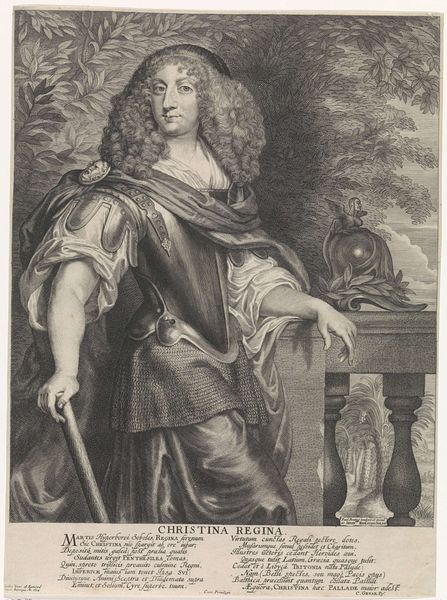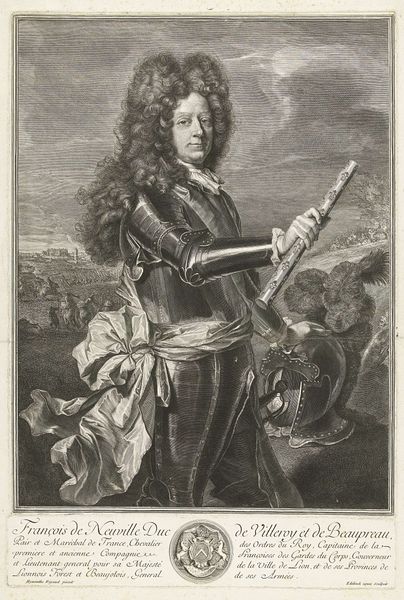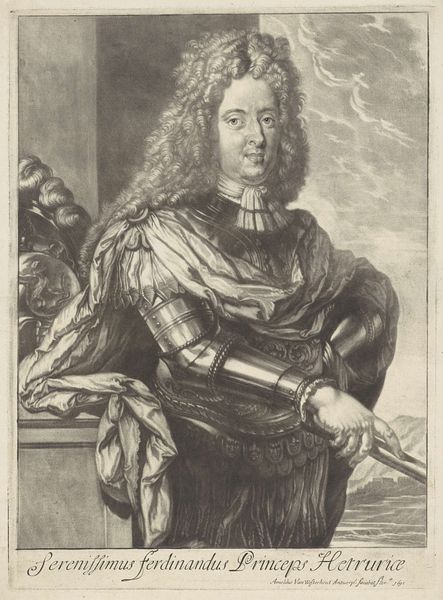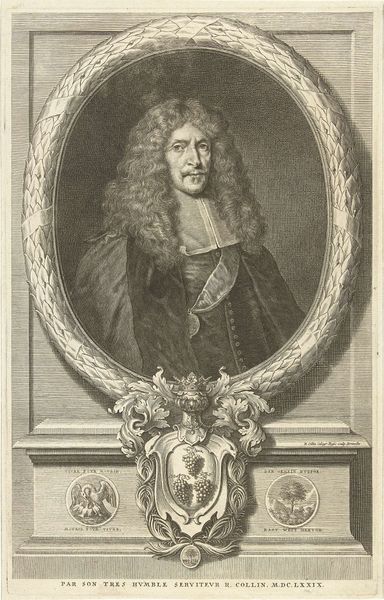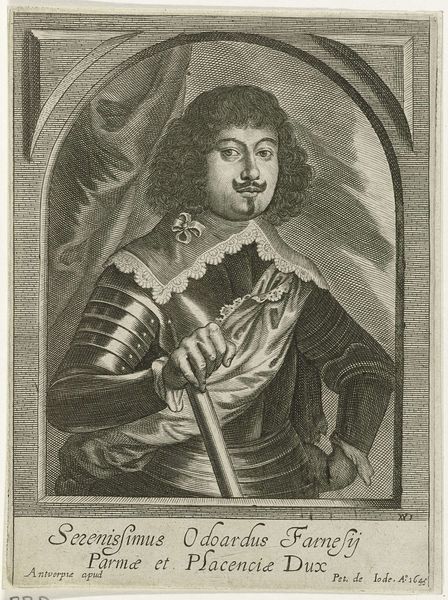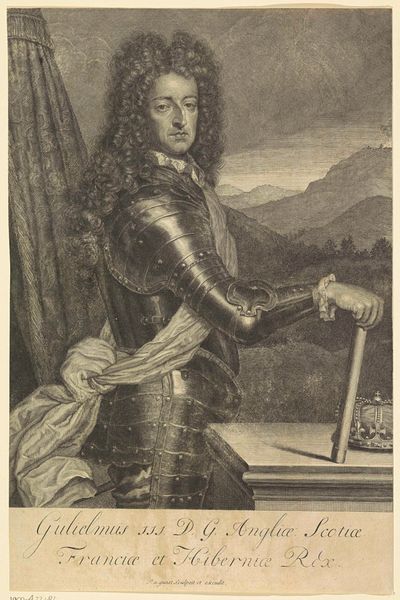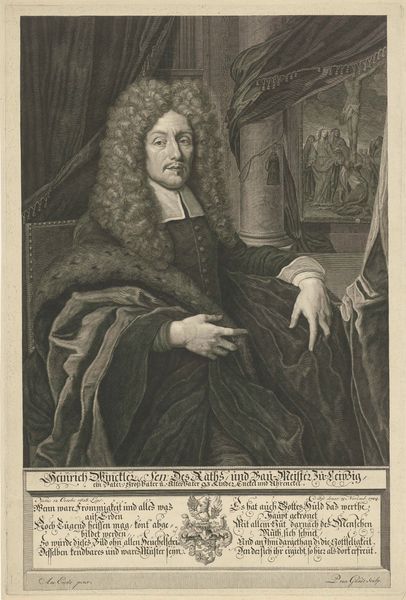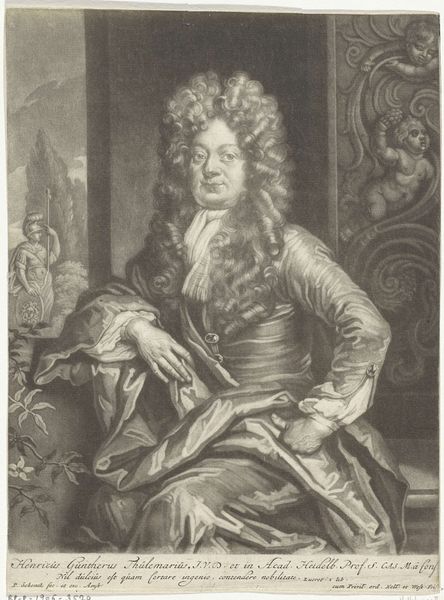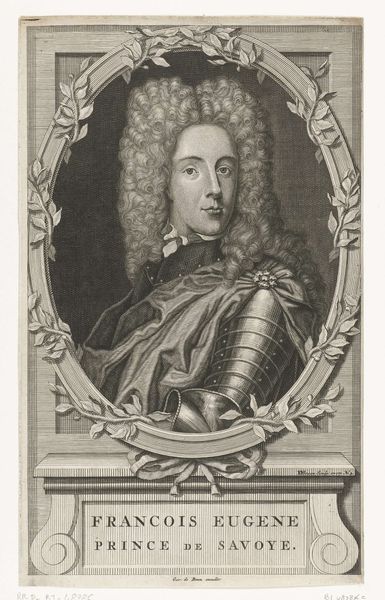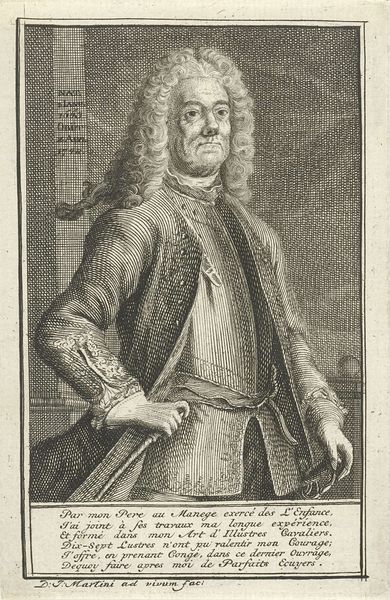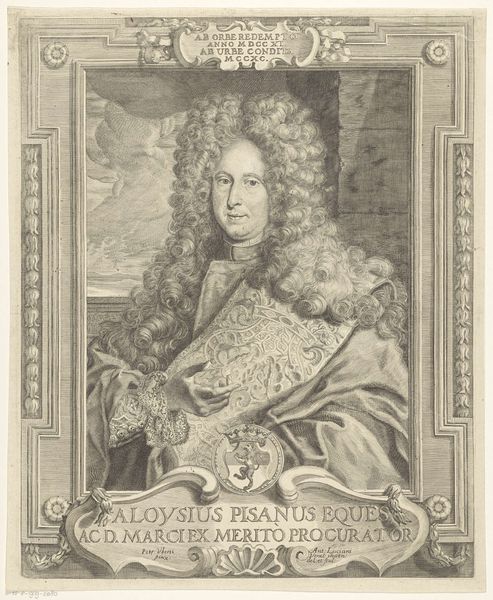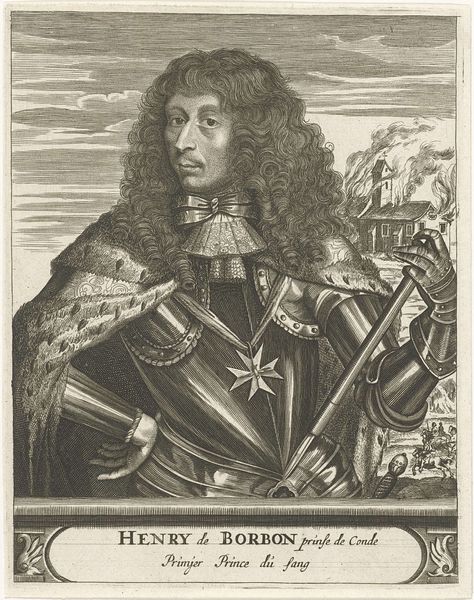
engraving
#
portrait
#
baroque
#
dutch-golden-age
#
old engraving style
#
portrait drawing
#
history-painting
#
engraving
Dimensions: height 200 mm, width 130 mm
Copyright: Rijks Museum: Open Domain
Curator: This is Pieter de Jode II's "Portret van Christina van Zweden," an engraving dating sometime between 1628 and 1670. Editor: Immediately striking. The rendering of armor paired with her seemingly effortless, voluminous hair creates a stark contrast, doesn't it? There's an interesting push and pull between power and… something softer. Curator: I agree. Considering de Jode’s meticulous work with engraving, it is useful to remember this is about a system of mechanical reproduction as much as a work of portraiture. Here the printing press is leveraged to circulate power. Think of the implications around disseminating images of a monarch, especially one as complex as Christina. Editor: Absolutely. And Christina herself! Known for her intellect, her abdication of the throne, and eventual conversion to Catholicism… she challenged norms at every turn. Seeing her depicted in armor, which has such heavy historical symbolism regarding masculinity, is very revealing. How do we read this concerning gender? Curator: One can’t overlook the traditional aspects either, right? The very precise engraving imitates the effect of metalwork which suggests an elite object produced by highly trained artists. Yet printmaking offered multiple originals at a fraction of the cost compared to single commissions of painted portraits or sculpture. The materials and processes were central to broader social changes. Editor: The inscription at the bottom feels key, too. "Christina Regina." Emphasizing her royalty… but also maybe subtly pushing back against the controversy surrounding her decisions? The inscription feels very deliberate; almost performative in its assertion of her status. The act of engraving becomes, itself, a political declaration. Curator: The Rijksmuseum holding this in its collection demonstrates enduring fascination. We grapple even now with how public images influence power dynamics. The intense lines on Christina’s armour make you consider how power can feel constricting or like something which needs defending. Editor: Right, the armor speaks to societal expectations and the protection of sovereignty. The way she leans casually against what appears to be a classical plinth makes her claim power while challenging traditional presentations. Her image, mass produced and circulated, contributes to her historical persona as one that straddled numerous different identities, religious and otherwise. Curator: Looking closely reveals the layers, literal and metaphorical, in constructing identity via reproducible materials. The print allows for distribution far and wide, playing a key role in shaping narratives. Editor: Ultimately, it seems, the means of production, the act of distribution, and Christina's own life interweave to produce a multifaceted image of power, intellect, and defiance. A woman creating a very active public persona through images.
Comments
No comments
Be the first to comment and join the conversation on the ultimate creative platform.

